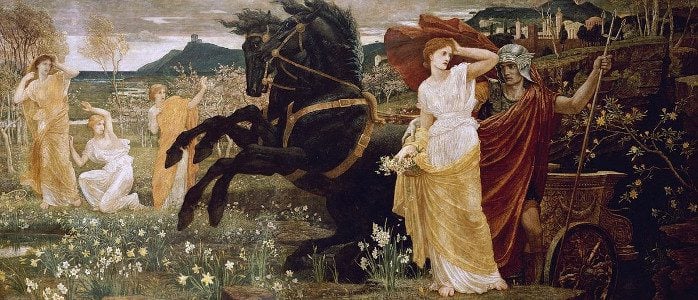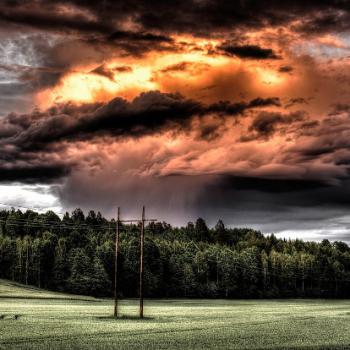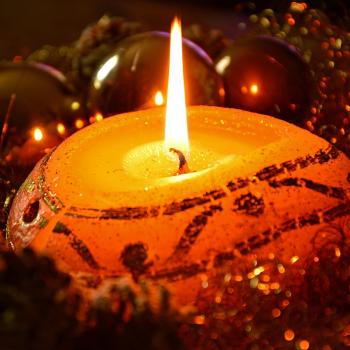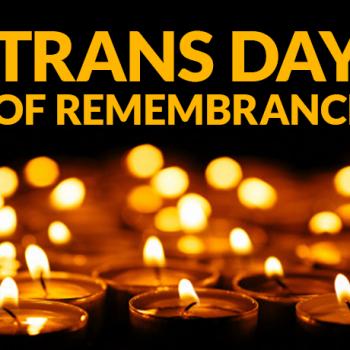
In ancient times, the rites of Eleusis were celebrated in ancient Greece. Regardless of gender or social status, they were open to anyone who could both speak and understand Greek as well as pay the token initiation fee. The Eleusinian Mysteries is one of the most well known ancient initiatory traditions, home to the celebration of life and life after death. During the spring, the Lesser Mysteries were made available to initiates and the Greater Mysteries took place in the autumn during Persephone’s descent. Traditionally initiates had to wait until the following year to partake of the Greater Mysteries once they underwent the Lesser.
We know only so much from people who either converted to Christianity and blabbed a bit or from initiates who commented on it obliquely without violating their oaths of secrecy. Plato in his work Phaedo had this much to say about the Eleusinian Mysteries: “our mysteries had a very real meaning: he that has been purified and initiated shall dwell with the gods.” Within the OTO Gnostic Mass and within certain traditions of the Craft, you will often hear “There is no part of me that is not of the gods”, which echos this to an extent.
As a modern Hellenist, I honor Demeter and Persephone during the spring and fall equinoxes since these were traditionally the times when the Lesser and Greater Eleusianian Mysteries were held in honor of these goddesses. In the spring I celebrate Persephone/Kore’s ascent from the underworld and in the autumn, I celebrate her descent into the underworld. During Samhain I honor her as Persephone, fully having assumed her throne in the underworld with Hades at her side as both king of the underworld and her husband. It is not the only holiday in the modern pagan wheel of the world I have incorporated into my own festival calendar, and you can read about how I celebrate Imbolc in my own way here.
In New England, our weather in March is often all over the place. Right now it feels nothing like spring as another nor’easter is heading our way. But as time goes on for us, the storms give way to milder temperatures, rain to nourish the incoming crops, and our summers are green and beautiful as a result. Kore comes back to us, yes–but here it is not a gentle release of buds and flowers; it is often stormy and tumultuous. The goddess tends to make quite the entrance in this part of the world!
The Eleusinian Mysteries were meant to promise all of us an afterlife, and that death is not the end. In some pagan traditions, Samhain is seen as the time when souls go into the underworld and during Beltaine, they come back to us from that very underworld. These are the gates where life and death meet us, going in and coming out. Much like the cycle of nature, the cycle of life, death, and rebirth continues. Beltaine and Samhain are modern holidays based on ancient traditions, none of them Greek.
It is very likely that due to both the climate and cultural differences, what we perceive to be “Beltaine time” was incorporated into a variety of traditions that took place in the spring and Samhain, in the autumn. Since ancient Hellenists had no universal calendar and some places had many different calendars, we have no universal festivals or holidays to draw from. Most of what we know is from the Attic or Athenian festival calendar, which was unique to Athens during a particular period of their history, and in time got complicated and out of sync with the seasonal calendars it was meant to coincide with. This was due to their calendars being based on the phases of the moon.
Today there are a number of initiatory traditions which celebrate rites and initiations loosely based on the premise of the Eleusinian Mysteries. There is the provider cycle which the Chthonioi-Alexandrian tradition performs, Crowley’s Rites of Eleusis, the Hermetic Order of the Golden Dawn, and many other mystery schools have taken the ideas presented as we know of them today in and have incorporated them in some form or another in their own rites.
I will conclude with a hymn to Proserpine (Persephone) from Orphic Hymn XXVIII:
DAUGHTER of Jove, almighty and divine,
Come, blessed queen, and to these rites incline:
Only-begotten, Pluto’s honor’d wife,
O venerable Goddess, source of life:
‘Tis thine in earth’s profundities to dwell, 5
Fast by the wide and dismal gates of hell:
Jove’s holy offspring, of a beauteous mien,
Fatal, with lovely locks, infernal queen:
Source of the furies, whose blest frame proceeds
From Jove’s ineffable and secret seeds: 10
Mother of Bacchus, Sonorous, divine,
And many-form’d, the parent of the vine:
The dancing Hours attend thee, essence bright,
All-ruling virgin, bearing heav’nly light:Illustrious, horned, of a bounteous mind, 13
Alone desir’d by those of mortal kind.
O, vernal queen, whom grassy plains delight,
Sweet to the smell, and pleasing to the sight:
Whose holy form in budding fruits we view,
Earth’s vig’rous offspring of a various hue: 20
Espous’d in Autumn: life and death alone
To wretched mortals from thy power is known:
For thine the task according to thy will,
Life to produce, and all that lives to kill.Hear, blessed Goddess, send a rich increase 25
Of various fruits from earth, with lovely Peace;
Send Health with gentle hand, and crown my life
With blest abundance, free from noisy strife;
Last in extreme old age the prey of Death,
Dismiss we willing to the realms beneath, 30
To thy fair palace, and the blissful plains
Where happy spirits dwell, and Pluto reigns.
If you wish to learn more, there are also a number of excellent resources out there on Peresephone/Kore, Demeter, Jand the Eleusinian Mysteries in general:
- http://eleusinianmysteries.org/
- Theoi.com – Persephone
- Theoi.com – Demeter
- Karl Kerenyi, Eleusis: Archetypical Image of Mother and Daughter
- Bibliotecha Alexandrina, Queen of the Sacred Way: A Devotional Anthology in Honor of Persephone
- Charles Stein, Persephone Unveiled
- Jennifer Reif, Mysteries of Demeter: Rebirth of the Pagan Way
- Ronald S Stroud, Demeter and Persephone in Ancient Corinth
- Charles River Editors, Eleusinian Mysteries: The History of Ancient Greece’s Most Famous Religious Rites
- R Gordon Wasson et al, The Road to Eleusis: Unveiling the Secret of the Mysteries
















